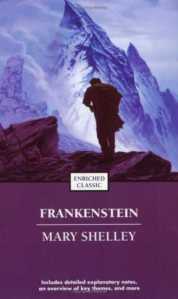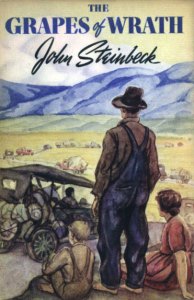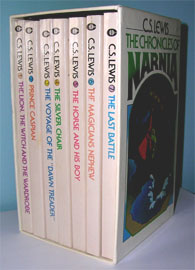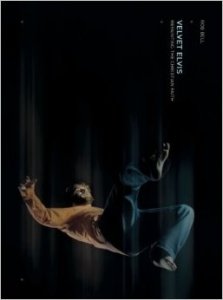Post #1 in my year-long goal to once a month blog a list of important or inspirational things in my life:
As far back as I can remember, I have loved to read. Books have always been an important part of my life. They have spurred my imagination, challenged my norms, inspired actions, and played an important role in restoring and preserving my faith. When I thought about lists to make involving things that have shaped my life – books were the first thing to come to mind. I don’t really have a favorite – rather, there are a few books that I would, right now, count as important or transformational in my life. As with any list, this is far from comprehensive, and could very easily look like a far different list a week from now. That said, here are 5 of the books (in no particular order) that I love and would count as some the most influential in my life.
(Note – I am leaving the Bible off. I think that is a given for a Christian, let alone a pastor. So before you sic the dogs on me – just know that the Bible is in a category all to itself for me)
I was born and raised in a Christian home, attending church every Sunday and Wednesday as long as I can remember. I am thankful for that, but I understand now that being raised that way comes with the danger of seeing the world in a very limited and narrow way. As a young believer, I would say those things described my faith pretty well – limited and narrow. As I aged I found that my beliefs were often coming into conflict with what I was learning and experiencing. I constantly found myself bashing my head against walls as what I had been taught and raised to believe just didn’t seem to fit anymore. Because I was serving in a pastoral role, I felt like there were just certain things that I had to believe in order to be a faithful follower of Christ. I had questions that I was afraid to ask and doubts I was afraid to express. As those questions and doubts mounted, I reached a point where I was just ready to give up. I felt like my questions made we weak and fearful of being found out. I felt like I just did not fit in with Christians anymore.
Then I read Velvet Elvis. I had been familiar with Rob Bell from his Nooma videos and just happened to find this book on Amazon. What I found in it was someone who was not afraid to ask questions, even to the point of asking some of the questions that we feel like we must not ask. It was, for me, the breath of life I needed. Bell’s style is easy to read, and I appreciate how he would ask questions, but allowed the reader room to formulate their own answers. It was the first time that I felt like my doubts and questions could actually propel me closer to God. Bell talks about faith as either a brick wall that we smash ourselves into until we give up or destroy ourselves, or a trampoline that bends and flexes with conflict – ultimately throwing us closer and closer to God with each leap and bound.
For me, Velvet Elvis was a new beginning
(I’d also highly recommend Bell’s book, What We Talk About When We Talk About God. In the same train of thought, check out Brian McLaren’s A New Kind of Christian)
 2) Frankenstein by Mary Shelley
2) Frankenstein by Mary Shelley
During my junior year of college I accidentally signed up for the wrong literature class in pursuit of my English minor. Imagine my shock when I showed up for Detective Lit to find that, not only was the class actually Female Gothic Literature, but that I was the only male in the entire class. It ended up being my favorite college course. It was here that I was first introduced the works of Charlotte and Emily Bronte, Anne Radcliffe, Charlotte Perkins Gilman, and many more. I seriously loved everything we read that semester – but I was truly impacted by Mary Shelley’s Frankenstein.
If you haven’t read the story, you may tend to think of Frankenstein’s monster as being, well, the monster in this classic tale. Read the story and you quickly realize that the humans in the story are the true monsters, and the monster the most humane of the characters Shelley depicts. Themes of morality and virtue and their sources, creation, the need of human interaction, and man’s depravity are woven throughout this classic tale. It is saddening to watch the “monster” slowly give up hope and sink into despair as he starts to mirror those in the world he finds himself “born” into. Frankenstein’s monster was not born as a monster, but the world he is in turns him into one. To me, Shelley showcased how religion and belief can make men out of monsters, and monsters out of men.
(Once your whistle for female Gothic is dampened, be sure to check out Charlotte Bronte’s Jane Eyre, and Charlotte Perkins Gilman’s short story The Yellow Wallpaper.)
3) The Sneetches by Dr. Seuss
I could not make this list and leave this book off. If we are talking about books that impact the way we think, this one has to be on there for me. It applies to racism, religion, class, and so much more. It really is just about accepting ourselves and each other just as we are. It is a simple lesson, but hard to learn it would seem. It is a lesson that can change a world.
 4) The Grapes of Wrath by John Steinbeck
4) The Grapes of Wrath by John Steinbeck
I first read Steinbeck’s Grapes of Wrath in a high school lit class and hated it – I’m not sure why other than it was far different from the Stephen King novels I was reading at the time. I read it again in college – this time around from a far different perspective. I am fairly certain no novel has left such a vivid imprint of its imagery in my mind. Set in the Great Depression, Grapes chronicles the trials and tribulations of the Joad family. The Joad’s, tenant farmers in Oklahoma, are forced by the Depression and the Great Dust Bowl to uproot and move to California. The family faces down sorrow on nearly page of this American classic – from their land being possessed, experiencing devastating poverty, the death of beloved family members, and the breaking of family bonds. Shoot, their dog even gets run over on the highway. Good times…
I’m not sure why I like books that seem to highlight how inhumanely men treat one another – but Grapes certainly captures this reality. The tale captures how people of prestige and power may do whatever it takes to preserve their positions with no regard for the toll it takes on those “beneath” them on the social ladder. The story though, is about more than that. It is about enduring hope, the importance of family bonds, the kindred spirit of the suffering, and the ability we all have to better the lives of those around us. It is about indecency and human dignity.
In one scene, Rose of Sharon, whose husband has disappeared, gives birth to a stillborn child and its lifeless corpse is tossed into a flooding river. Where despair and grief would give ample reason to withdraw from the needs around her, Rose of Sharon instead commits one of the most disturbingly beautiful selfless acts I have seen in literature. Trapped in a barn surrounded by raging flood waters, Rose finds herself with an elderly man who is starving and near death. Then this…
“For a minute Rose of Sharon sat still in the whispering barn. Then she hoisted her tired body up and drew the comfort around her. She moved slowly to the corner and stood looking down at the wasted face, into the wide, frightened eyes. Then slowly she lay down beside him. He shook his head slowly from side to side. Rose of Sharon loosened one side of the blanket and bared her breast. “You got to,” she said. She squirmed closer and pulled his head close. “There!” she said. “There.” Her hand moved behind his head and supported it. Her fingers moved gently in his hair. She looked up and across the barn, and her lips came together and smiled mysteriously.”
It is disturbing, and creepy, and sorrowful, and hopeful, and beautiful all at once. I am pretty sure nothing I have ever read has stuck in my mind as much as that.
 5) The Chronicle of Narnia (series) by C.S. Lewis
5) The Chronicle of Narnia (series) by C.S. Lewis
I purposefully saved this for last – because, well these are the only books I purposefully re-read every few years. I was in the fourth grade when my dad gave me his copy of The Lion, the Witch, and the Wardrobe. I was hooked from sentence one, but it was the only book in the series that he owned at the time. That year for Christmas my parents bought me the entire set (exactly like the box set in the picture). I read every single one of them before my Christmas break was over. My dad let me read every last one of the books before he revealed to me what they were truly about – Jesus’ story, God’s story for us. My mind was blown. Shoot, the name of my blog is a paraphrase from The Last Battle.
I have to list them as a set because there are sooooo many different scenes that stand out to me. Even as I read them now as an adult I am captured by something new with each reading – and particularly by how much I appreciate the way C.S. Lewis thinks of and depicts God and His relationship with creation. Particularly, I love the way Lewis creates a god-figure in Aslan that is both comforting and frightening; perceivable and yet somehow also wildly outside of what we can imagine. It is a story of hope in God, and God’s hope in us; of grace that defies our logic and reaches far beyond the boundaries we create for it.
I can’t detail each and every scene for you – but here are a few that captivate me every time I read them:
- The Voyage of the Dawn Treader – Eustace Scrubb, a nasty bratty child, has been turned by his own greed (and an enchanted bracelet) into a menacing fire-breathing dragon. In one scene Eustace has learned his lesson and longs to be human again. He scratches and tears at the dragon scales that have become his skin – but no matter how hard he tries, he cannot escape the dragon flesh that now imprisons him. Aslan says to the boy, “You will have to let me undress you.” Eustace surrenders to Aslan’s mighty claws that now rip through the dragon skin – at first with great pain, but soon giving way to the pleasure of feeling the old torn away. Aslan then bathes the boy in a mountaintop pool before dressing him in new clothes. It is the greatest thing I have ever read. Yes, I said ever. This will be a tattoo for me – somehow, someday.
- The Magician’s Nephew – In one scene we get the privilege of watching Aslan as he creates Narnia – by singing. The notes of his song give birth to the mountains and valleys, oceans and rivers, flora and fauna as he strolls through the nothingness around him – the volume and tones rising and falling to match the enormity and complexity of the things he is creating. It is the most inspirational and beautiful version of the creation epic I can imagine.
- The Lion, the Witch, and the Wardrobe – If you can read the account of the Stone Table and not be somehow moved deeply in your soul – well then, you have none. Christian or not, Aslan’s selfless act of sacrifice to save Edmund (and ultimately all of Narnia) is powerful stuff that can mess up your world. He is, after all, not a safe lion – but he is good.
- The Last Battle – There is so much in this one that it is hard to choose, but there is a scene when a Calormene soldier discovers a grace and gospel that is bigger than you and I are capable of fathoming. Lewis gets accused of being somewhat of a universalist for what he writes here, but I think it is a mesmerizing depiction of a grace and gospel that is for everyone.
Each of these works has contributed in ways, large and small, to make me who I am today. I still try to read as much as I can, trying to balance out reading for pleasure and learning. No matter what, I have found that in most things I read, there are opportunities for growth. I’d love to hear your suggestions of what I should be on this year’s reading list!
P.S. – Lately classes have been consuming my reading time – but when I can I have been reading through a collection of Jules Verne works (just because they are fun). I have also discovered a love for the works of Nikolai Gogol – a quirky Ukranian/Russian author. His works are bizarre and eccentric – check out Dead Souls and The Nose.
